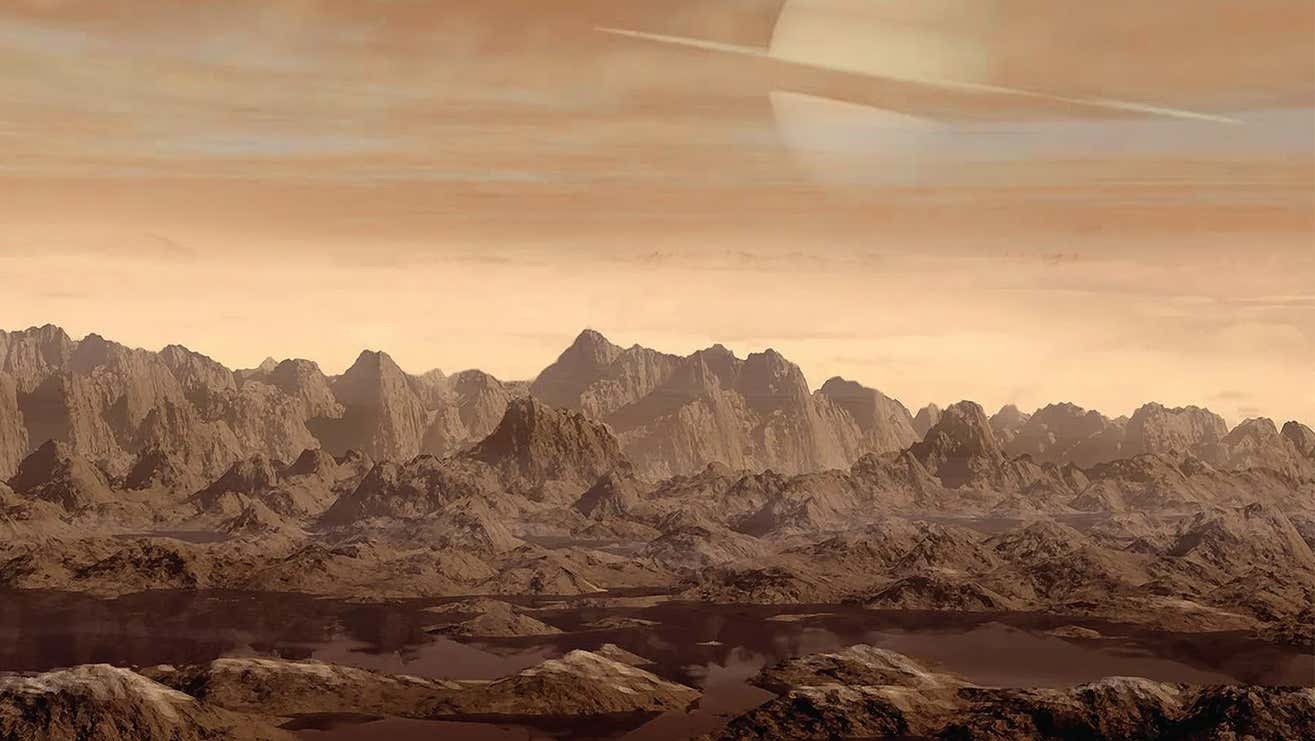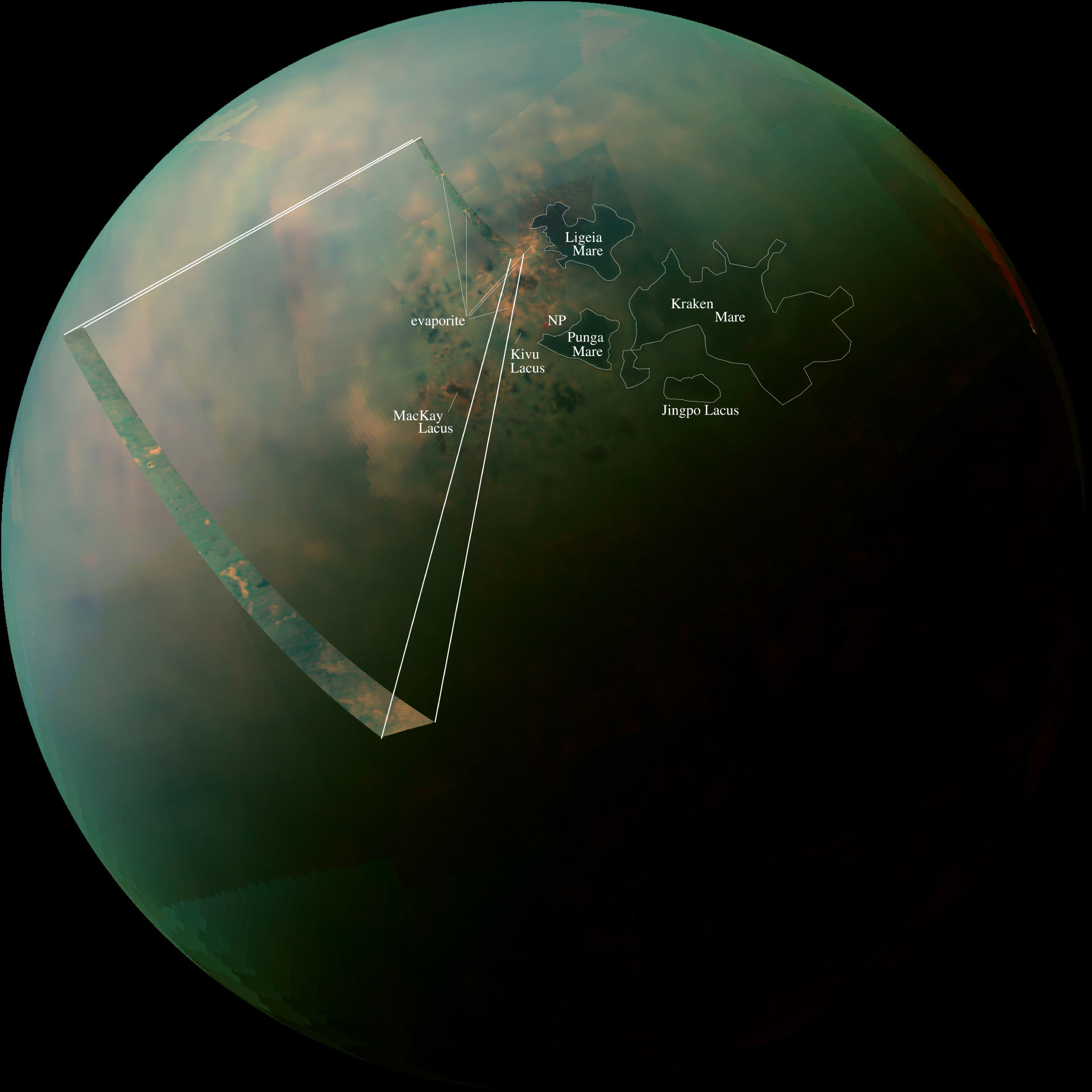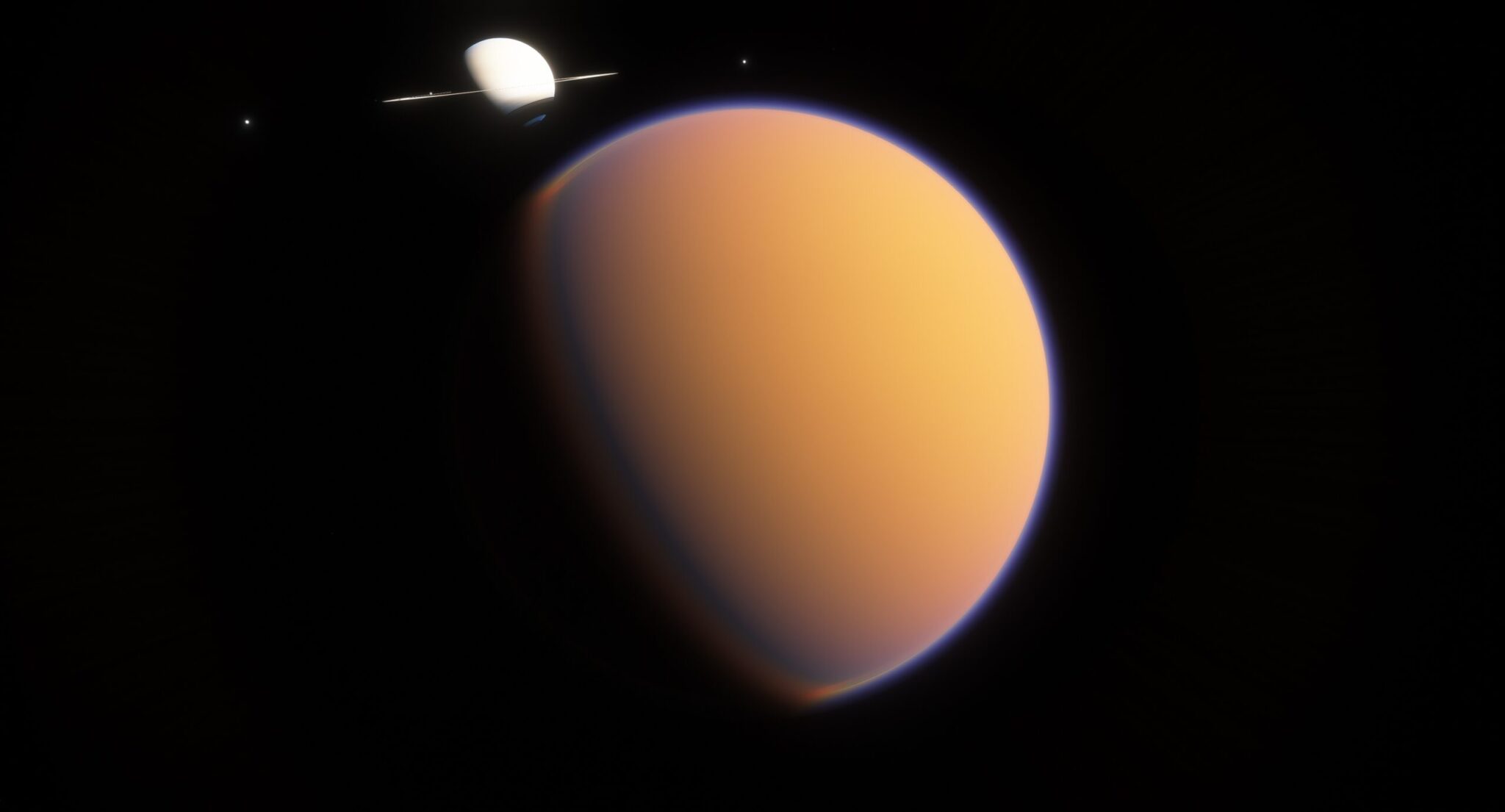In 2006, NASA’s Cassini spacecraft flew past Saturn’s largest moon, Titan, and discovered large volumes of liquid on its surface. This shocking discovery revealed that Titan’s landscape is remarkably similar to Earth’s: the two worlds are the only ones with rivers, lakes and seas.

Titan’s shoreline, however, is different from ours. Instead of water, a mixture of methane, ethane, and other hydrocarbons flows across Titan. A new study suggests that waves of these liquids may crash against the moon’s shoreline, forming its wet landscape.
A team of geologists from the Massachusetts Institute of Technology examined Titan’s shoreline to see if waves could have eroded its shores into its current shape. Using computer models, they simulated the different types of erosion that could have created the shoreline seen in images from the Cassini mission nearly 20 years ago.
“If we could stand at the edge of one of Titan’s seas, we might see waves of liquid methane and ethane lapping on the shore and crashing on the coasts during storms. And they would be capable of eroding the material that the coast is made of,” explains Taylor Perron, a professor at the Massachusetts Institute of Technology and co-author of the study. The results of the study are published in the journal Science Advances.

Scientists have debated for years about the presence of waves on Titan. Some argued that the surface of the seas was smooth, while others saw ripples. The authors of the new study looked at the shape of the shoreline to see what might have caused its erosion. The researchers modeled a sea with flooded river valleys along its edges and ran it through three scenarios: no erosion, wave-induced erosion, and uniform erosion, where the fluid dissolves bank material over time.
The team mapped the shoreline of Titan’s seas using Cassini radar images and applied their modeling to each of the seashores. They found that all four seas fit the wave erosion model as the most likely mechanism to explain their shape.

Researchers are now preparing to study the winds on Titan to find out how strong they would have to be to raise waves capable of destroying shorelines on the moon.
We previously reported on how Saturn’s moon Titan may be uninhabitable.
According to gizmodo.com


